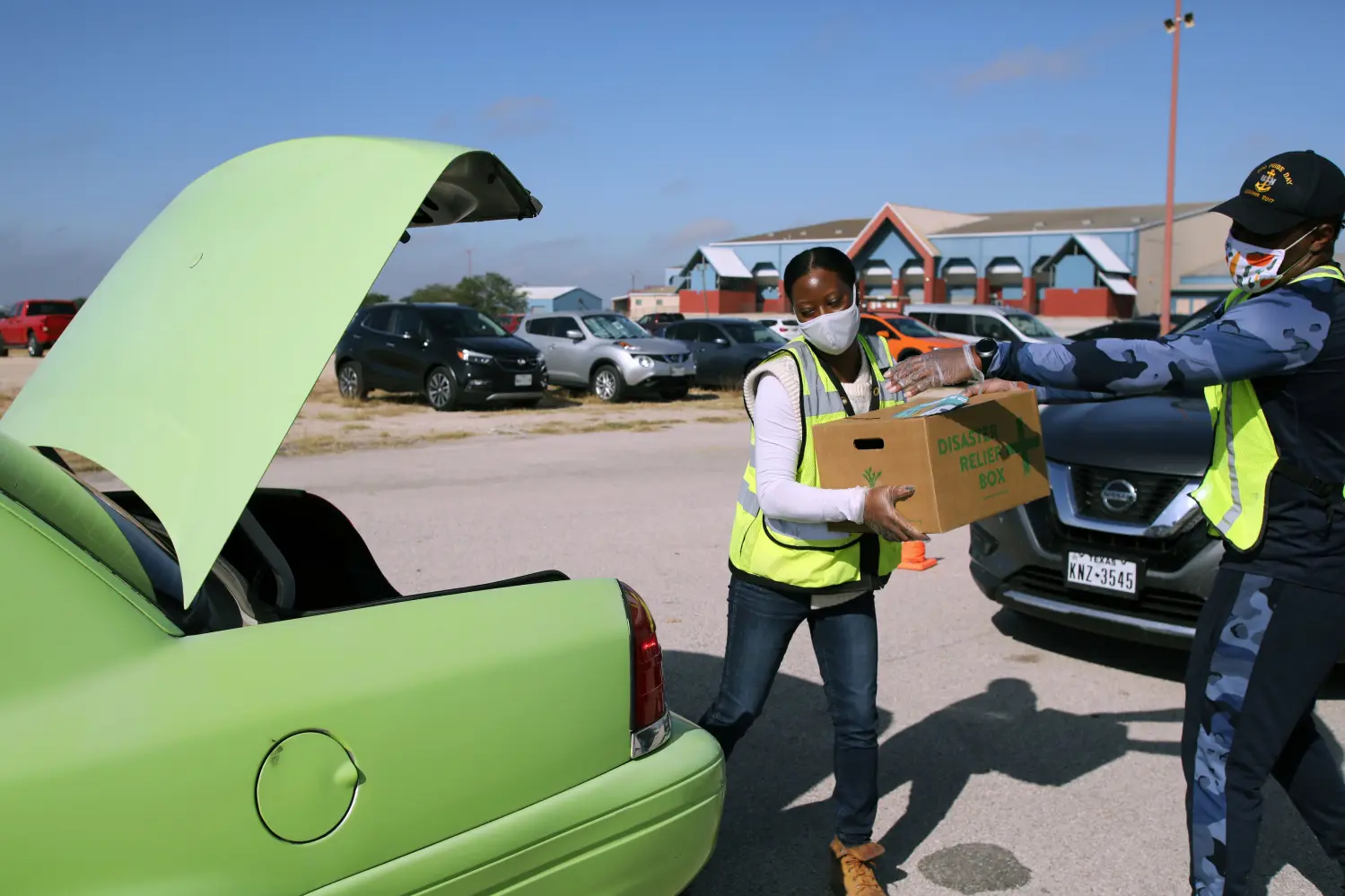This brief is part of the Brookings Blueprints for American Renewal & Prosperity project.
Contents
- Summary
- Challenge
- Limits of historic and existing policies
- Policy recommendation: Dramatically expand federally supported and recognized national service opportunities for young adults
- Conclusion
Summary
The COVID-19 pandemic and accompanying economic downturn are having staggering effects on young adults. Young people are typically among the hardest-hit groups during recessions, and getting off to a bad start in the labor market can have long-term negative effects. The COVID-19-fueled recession is also severely disrupting postsecondary education, with college enrollment dropping as students face financial hardship or don’t have access to the technology necessary for remote learning. Disconnection from both work and school at this phase of a person’s life can cast a long shadow.
This is playing out amid sharp social divisions and mistrust among people of different political beliefs, races and ethnicities, and economic circumstances. Moreover, widespread joblessness and economic hardship is likely to breed more alienation and a sense that the economic system—and the political system supporting it—is unfair.
An expanded national service program can help address these problems. National service programs such as AmeriCorps, YouthBuild, and conservation corps put young people to work on a variety of socially useful activities: tutoring children, building affordable housing, assisting with disaster response, maintaining public infrastructure, and restoring the environment. In return, they earn a modest living allowance and a small educational scholarship. By working together on shared, concrete endeavors, young people from different backgrounds can build trust with one another in a way that more abstract calls for mutual understanding cannot accomplish.
We should greatly increase the number of positions available through these programs to mobilize young people to meet urgent community needs, both those related to COVID-19 as well as more long-standing ones. We should also make some long-overdue adjustments to these programs: First, increase the living allowance (which is typically close to the poverty line) so that it is financially feasible for more young people to participate; and second, increase the educational award so that its value is not outpaced by rising tuition.
When the COVID-19 crisis abates, we should continue to grow national service opportunities. A more robust national service infrastructure will address key issues predating the pandemic, such as the need for more stability and guidance to help young adults gain a foothold in the labor market, and the need for structured opportunities that allow people to interact and work with a diverse group of peers.
Challenge
Helping young people prepare for work and life as engaged citizens is a central challenge for any society. The challenge is exponentially greater in the COVID-19 era, given the pandemic’s staggering economic, social, and health impacts.
We are watching in real time as COVID-19 disrupts the educational and employment experiences of tens of millions of young people and casts a long shadow over their future prospects. The last decade’s economic catastrophe—the Great Recession—hit young adults particularly hard, and history is likely to repeat itself.
Both for individuals and the broader economy, it is far more effective to prevent disconnection from the labor market in the first place (or to shorten periods of unemployment) and promote productive learning opportunities than to try to reconnect young people to employment or education after a long period of disengagement.
As of November 2020, unemployment rates among young people were down from their peak in the spring, but still considerably higher than normal: 14% among teens ages 16 to 19 and 10.5% among young adults 20 to 24. During the first 12 weeks of the pandemic (mid-March to mid-May), between 58% and 63% of young adults ages 18 to 24 reported a loss of employment income each week—consistently the highest share of any age group.
For young people entering the labor market for the first time, the consequences of this economic downturn could lead to an array of long-term consequences, including weaker earnings and slower career growth. College enrollment is down—especially at community colleges—due to a variety of factors, including financial hardship and lack of access to technology for online learning. While the majority of young adults will find work or reenroll, some will not—and the longer a young person is disconnected from both school and work, the less likely they are to reconnect. Disconnection rates increase with age: One study found about 1% of 18-year-olds are disconnected, a figure which rises to 5% at age 20 and 12% at age 26.
Of course, the pandemic is causing widespread social and economic hardship for people of all ages. Nearly 26 million adults report their household has not had enough food at some point during the last seven days, and nearly 20 million report being behind on rental or mortgage payments.1 The switch to remote learning is causing varying degrees of learning loss among K-12 students. These losses are especially destructive for children in lower-income households with more limited access to computers and the internet, and will take time and effort to rectify.
All of this is playing out against a backdrop of sharp social divisions, in which people of different classes, races, political parties, and religious and cultural backgrounds are less likely to interact with and trust each other. Many factors have contributed to this weakening social cohesion: geographic sorting into communities with people of similar backgrounds, the ease of creating online bubbles with like-minded people, the stratification of higher education by race and class, and a polarized labor market in which people with lower levels of education face stagnant wages, reduced job quality, and less potential for career growth.
In a democratic, diverse society, people’s unwillingness to communicate and collaborate with those outside of their own in-group is disastrous. Moreover, widespread joblessness and economic hardship is likely to breed more alienation and a sense that the economic system—and the political system supporting it—is unfair.
Limits of historic and existing policies
COVID-19 legislative packages provided critical and unprecedented economic relief in the early stages of the pandemic. The Families First Coronavirus Response Act and the CARES Act, both passed in March 2020, directed funding to support workers, businesses, and state and local governments. But there is overwhelming need for additional federal aid, given the continuing spread of the virus and the length and intensity of the economic downturn. States and localities are projected to face budget shortfalls for years, and absent additional federal relief, they will likely make cuts in spending even as public health and social service needs increase. Provisions supporting workers and businesses urgently need an update as well: Enhanced unemployment benefits, paid sick and family leave, and programs providing forgivable loans to business have expired or will expire by the end of 2020.
Moreover, these relief-focused provisions for the unemployed did not directly create jobs or invest in supporting career transitions for unemployed workers whose jobs are not coming back. In the best of times, young people attempting to enter the labor force are often at a disadvantage by virtue of their smaller networks and relative lack of experience. Millions of young people are now at the end of a much longer line of job seekers, greatly reducing their chances of finding employment.
National service initiatives and other programs such as AmeriCorps, YouthBuild, and conservation corps provide mechanisms to mobilize people (primarily young adults) to meet community needs while also paying them a modest living allowance. They are fairly small, however: About 75,000 people serve each year in AmeriCorps, about 22,000 to 24,000 in the conservation corps, and about 10,000 in YouthBuild. Participants carry out activities such as tutoring children, building affordable housing, assisting with disaster response, and supporting environmental conservation. Members also receive an educational award that can be used to pay for college or technical school, or to repay student loans. Both YouthBuild and conservation corps partner with AmeriCorps to support slots for participants (although these programs have other partners and funding sources as well).
A cost-benefit analysis of AmeriCorps programs found that for each dollar spent, taxpayers receive a return of more than $2 in the form of increased tax revenues and productivity. The social benefits (such as increased human and social capital) are even greater, with a return of more than 3.5 times the cost. Yet we only provide enough funding for AmeriCorps to deploy about 75,000 participants at a given time, although three to five times that many people apply every year, and it is authorized for 250,000 people.
Policy recommendation: Dramatically expand federally supported and recognized national service opportunities for young adults
- Provide an immediate boost in the number of national service positions to 150,000 in 2022, 300,000 in 2023, and 600,000 in 2024.
- Increase the living allowance to at least 175% of the federal poverty level.
- Increase the educational award to cover two years of public university tuition in the corps members’ home state.
- Build the organizational infrastructure to support an expansion to at least 1 million service positions over time.
An expanded national service program should have the following goals:
- Improve the health and well-being of local communities by providing valuable educational, social, and environmental services.
- Prevent long-term unemployment among young adults and reduce economic hardship.
- Help young people prepare for future good jobs by offering a more affordable route to postsecondary education and giving them the chance to learn new skills, gain work experience, and expand their social and professional networks.
- Rebuild civic and social connections by bringing participants from different backgrounds, income levels, races, ethnicities, and areas of the country together in shared experiences to solve public challenges.
This proposal is aligned with other recent analyses of and recommendations to expand national service, the most comprehensive of which is the March 2020 report Inspired to Serve, the final report of the National Commission on Military, National, and Public Service.[2] Notably, research on technology, trust, and society also recommends national service, noting its potential to “bridge gaps in the social graph, to intentionally connect people and communities.”
Our recommendation also aligns with recent legislative proposals, including the Cultivating Opportunity and Response to the Pandemic through Service Act in the Senate and the Pandemic Response and Opportunity Through National Service Act in the House.
President-elect Joe Biden did not specifically mention national service on the campaign trail, but his platform includes a public health corps to support COVID-19-related contact tracing and a Civilian Climate Corps to carry out conservation and climate resilience work.
Mobilize corps members to address short- and long-term needs
There is no shortage of productive work to be done, especially in the context of a pandemic that has disrupted almost every aspect of American life. Some of the most urgent pandemic-related needs relate to education, social services, and emergency assistance. Other long-standing needs include maintaining and upgrading public infrastructure and addressing climate change.
The nature of the work and who carries it out matter a great deal if the initiative is to build trust and understanding among different groups of people. The work should provide societal value that is “visible, open to inspection, whose significance is widely recognized” and is carried out by “a mix of people whose interests, backgrounds, and resources may be quite different.”2 Taking part in concrete, shared endeavors is more likely to bridge differences than more abstract calls for mutual understanding.
Below, we outline some priority areas for what national service participants should do. Notably, at least the next six months or so, all work carried out by service corps members will require the creative use of indoor and outdoor space in order to reduce the likelihood of transmitting COVID-19, along with adequate personal protective equipment and safety protocols.
- Tutoring and enrichment for pre-K-12 students. Corps members can fill in gaps left by the switch to remote learning and cancellation of many formal after-school, enrichment, and sports programs by providing quality tutoring services and alternative programming. We know a great deal about best tutoring practices—including adequate training, low tutor-to-student ratios, and consistent and long-term tutor-student relationships—and an expansion of tutoring through national service should abide by these. Corps members can also be employed to promote the emotional wellness and social connectedness of young people through remote or physically distant enrichment activities, such as virtual story time, sing-a-longs, arts and crafts, or physical games.
- Computer and digital literacy training. Use of digital technologies has become a threshold requirement for full participation in school, society, and the economy, and corps members should be deployed to provide digital literacy training and support for students and workers.
- Emergency assistance and response, including public health efforts. In response to COVID-19, AmeriCorps members have been mobilized to collect and distribute food, conduct wellness checks, and contact trace. A larger service corps could do even more to respond to the immediate needs created by the pandemic.
- Public works and environmental conservation/restoration projects. In the spirit of the Civilian Conservation Corps from the 1930s, national service participants can address long-standing conservation, restoration, and climate change needs, such as maintenance backlogs in public parks and wildlife refuges, native grassland and coastal ecosystem restoration, forest and tree restoration and management, neighborhood beautification, and disaster preparedness. All of these can take place in rural areas as well as in suburban and urban environments.
- Other needs determined by states and localities. One of the virtues of national service is its flexibility and adaptability. State and local leaders should be well positioned to deploy corps members to address priorities specific to their areas and communities.
Corps members should not need to take part in extensive upfront training, since the focus is to engage people in hands-on work quickly. However, program leaders should coordinate with area employers, educators, and workforce development entities to prepare corps members for their next educational and employment steps after their term of service.
Lastly, although much of this discussion relates to addressing immediate COVID-19-related needs, expanded national service should continue and grow after the pandemic is under control. It addresses key issues predating the COVID-19 crisis: the need for more stability and guidance to help young adults gain a foothold in the labor market, as well as the need for structured opportunities that allow people to interact and work with others different from themselves, much like the military did in previous generations. In fact, before COVID-19 hit, several groups recommended national service increase to 1 million positions.
In order to make national service economically feasible for more people, the living allowance must increase. As noted in Inspired to Serve, the living allowance “often is so low that members cannot sustain themselves without outside assistance during their service term, and many enroll in public assistance programs just to make ends meet.”3 The report continues that in 2018, “the average budgeted living allowance for full-time AmeriCorps State and National members was $15,370, only 23% above the national poverty line for an individual.”4
We recommend increasing the annual living allowance to a baseline of 175% of the federal poverty level for an individual (about $22,000), and adjusting upwards for regions with a high cost of living, as is currently done.
The education award is also relatively small, especially compared to rising tuition costs. Currently, AmeriCorps members who work at least 1,700 hours over a one-year period are eligible to receive an education award equal to the maximum value of the Pell Grant at the end of their service—about $6,300 in the 2020 to 2021 school year. However, unlike other scholarships and federal awards, AmeriCorps’ educational award is subject to federal and state taxes, which reduces its value, and its pretax value only covers about two-thirds of the average in-state tuition at a public university.
This educational award is simply not big enough to meaningfully achieve the goal of promoting access to postsecondary education. It should not be pegged to the Pell Grant—we agree with our colleagues Richard V. Reeves and Isabel V. Sawhill, who recommend that corps members who complete one year in the program receive “two years of tuition-free education at any public higher education institution in their home state, including technical and vocational colleges, or at a government-subsidized apprenticeship with an employer.”
To support expansion, build upon and improve existing infrastructure
Several federal agencies already fund and/or administer service initiatives: AmeriCorps is supported by the Corporation for National and Community Service, YouthBuild is supported by the Department of Labor, and conservation corps have agreements with agencies such as the National Park Service and U.S. Fish and Wildlife Service to maintain, protect, and improve natural and cultural resources. Moreover, there is a robust network of intermediaries, agencies, and organizations at the federal, state, and local levels with ample knowledge and capacity to expand and improve service initiatives.
An expansion as ambitious as the one outlined here will be complicated, and there is always a risk that a push for growth will dilute quality. One key point is to avoid the temptation of starving administrative costs in a misguided effort to protect resources for living allowances and education awards. Programs will not be able to offer meaningful service opportunities if they are staffed on the cheap.
The network referred to above has a wealth of practical ideas to design, fund, and staff successful initiatives—see for example, the voluminous recommendations offered to the National Commission on Military, National, and Public Service as it held hearings around the country and consulted with stakeholders.
Invest for success
Expanding national service will necessarily increase costs. We estimate that raising the living allowance and increasing the number of service spots to 600,000 over three years would cost about $19 billion.5
Boosting the education award will also increase costs. Given that tuition and fees vary by type of institution and program, it is difficult to be precise, but as the program ramps up, we estimate that the increased educational award will cost roughly $3.6 billion in years two and three combined. (There will be no educational costs in year one, since the award is made after a year of service.) In 2025 (year four), the educational award would cost $5.4 billion, and about $7 billion per year subsequently if the number of service slots remains at 600,000.
Lastly, in recognition that state and local budgets will be depleted for years to come, the federal government should temporarily waive the requirement that organizations running service initiatives raise matching funds from state or local governments. Given the budget hits that state and local governments have taken due to COVID-19, many organizations will be unlikely to make their match requirement, thus losing federal resources.
Conclusion
We cannot fail in the crucial task of promoting equal opportunities for all young people to thrive. The COVID-19 pandemic has interrupted the education, socialization, and employment of tens of millions of children and young adults—disproportionately hurting those from low-income families and communities of color. Coupled with fraying civic bonds and hostile political discourse, it is a dispiriting moment in America.
As we recover, we must aim higher and think bigger, rather than returning to the economic and social status quo. An equitable recovery will require innovative policy solutions that stimulate job growth, increase wages, and prevent young people from long-term labor market disconnection. Even in times of low unemployment, many young people leave high school only to confront a postsecondary landscape that may be confusing and prohibitively expensive, or a labor market in which they primarily qualify for low-wage jobs.
A greatly expanded national service program can help us face these problems. It will provide an avenue for young people to support themselves financially, carry out meaningful and productive work, learn new skills, expand their networks, and reduce financial barriers to postsecondary education. If we do it right, it can also begin to address social fragmentation, starting with the young people who will assume leadership roles in the future. By placing young people in an environment in which they must actively and intentionally work alongside people from different backgrounds and belief systems to advance a shared project, we can start to build stronger civic bridges and bonds among all Americans.
-
Acknowledgements and disclosures
The authors gratefully thank the following colleagues for their suggestions and assistance in the research and writing process: Alan Berube, Jabari Cook, Annelies Goger, Christopher Pulliam, and Belle Sawhill.
-
Footnotes
- U.S. Census Bureau, ”Week 18 Household Pulse Survey: October 28 – November 9: Table 2b. Food Sufficiency for Households, in the Last 7 Days, by Select Characteristics” available at https://www.census.gov/data/tables/2020/demo/hhp/hhp18.html (November 2020); U.S. Census Bureau, ”Week 18 Household Pulse Survey: October 28 – November 9: Table 1a. Last Month‘s Payment Status for Owner Occupied Housing Units, by Select Characteristics” available at https://www.census.gov/data/tables/2020/demo/hhp/hhp18.html (November 2020); U.S. Census Bureau, ”Week 18 Household Pulse Survey: October 28 – November 9: Table 1b. Last Month‘s Payment Status for Renter Occupied Housing Units, by Select Characteristics” available at https://www.census.gov/data/tables/2020/demo/hhp/hhp18.html (November 2020).
- Harry C. Boyte and Nancy N. Kari, Building America: The Democratic Promise of Public Work (Philadelphia, PA: Temple University Press, 1996): 16.
- “Inspired to Serve” (Washington, D.C.: National Commission on Military, National, and Public Service, 2020): 45.
- Ibid.
- We use the work of Richard V. Reeves and Isabel V. Sawhill, and Clive Belfield, as starting points for our estimate, but allow a more generous increase to the living allowance: Clive Belfield, “The Economic Value of National Service” (Washington, D.C.: Voices for National Service and The Aspen Institute, 2013); Richard V. Reeves and Isabel V. Sawhill, ”A New Contract with the Middle Class: Money” available at https://www.brookings.edu/essay/a-new-contract-with-the-middle-class-money/






